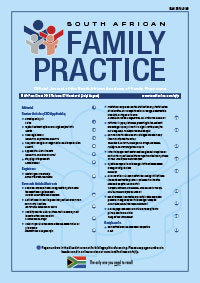Common adverse cutaneous drug reaction patterns and the causative drugs in Malaysia
Keywords:
adverse drug reactions, drug eruptions, drug reactions, Maculopapular Exanthem, Maculopapular Drug Eruptions
Abstract
Background: Patients with adverse cutaneous drug reactions (ACDRs) are frequently referred from primary care to tertiary centres for further management. This causes a loss of information regarding ACDRs as these patients discontinue primary care follow-up upon referral to tertiary care. The aim of this study is to determine the prevalence and characteristics of ACDR, and to use this valuable information to enhance awareness of primary care physicians regarding this condition. Method: A retrospective cross-sectional study on ACDR was done at the Dermatology Clinic, Kuala Lumpur General Hospital from January 2009 to December 2010. Results: The prevalence of ACDR was 0.2%. The majority of patients (71.6%) were below 59 years of age. ACDR commonly (55.2%) occurs within hours to days of drug ingestion and is of mild to moderate severity (74.6%). About 27.6% of affected patients took 1 to 5 drugs concurrently. Common cutaneous manifestation of ACDR includes maculopapular rash (22.4%) and Stevens Johnson syndrome (SJS, 9.7%). Antibiotics (36.6%), traditional and complementary medicine (TCM, 17.9%) and analgesics (13.4%) were the most frequent agents responsible for ACDR. Conclusion: The prevalence of ACDR in this study is low and the majority were of mild to moderate severity. The most common cutaneous manifestation was a maculopapular reaction and Stevens–Johnson syndrome. Antibiotics were the commonest causative agent for ACDR followed by traditional and complementary medicine and analgesics. Patients presenting with cutaneous disorders in primary care should be assessed for possible ACDR. A detailed drug history, time of initiation and duration of drug consumption are all valuable information required for an accurate diagnosis and proper evaluation of ACDR. It is hoped that the findings of this study will facilitate early recognition of ACDR followed by identification and elimination of any possible offending drugs that may be prescribed in primary care practice. (Full text available online at www.medpharm.tandfonline.com/ojfp) S Afr Fam Pract 2015; DOI: 10.1080/20786190.2015.1024026
Published
2015-08-26
Section
Research Articles
By submitting manuscripts to SAFP, authors of original articles are assigning copyright to the South African Academy of Family Physicians. Copyright of review articles are assigned to the Publisher, Medpharm Publications (Pty) Ltd, unless otherwise specified. Authors may use their own work after publication without written permission, provided they acknowledge the original source. Individuals and academic institutions may freely copy and distribute articles published in SAFP for educational and research purposes without obtaining permission.

